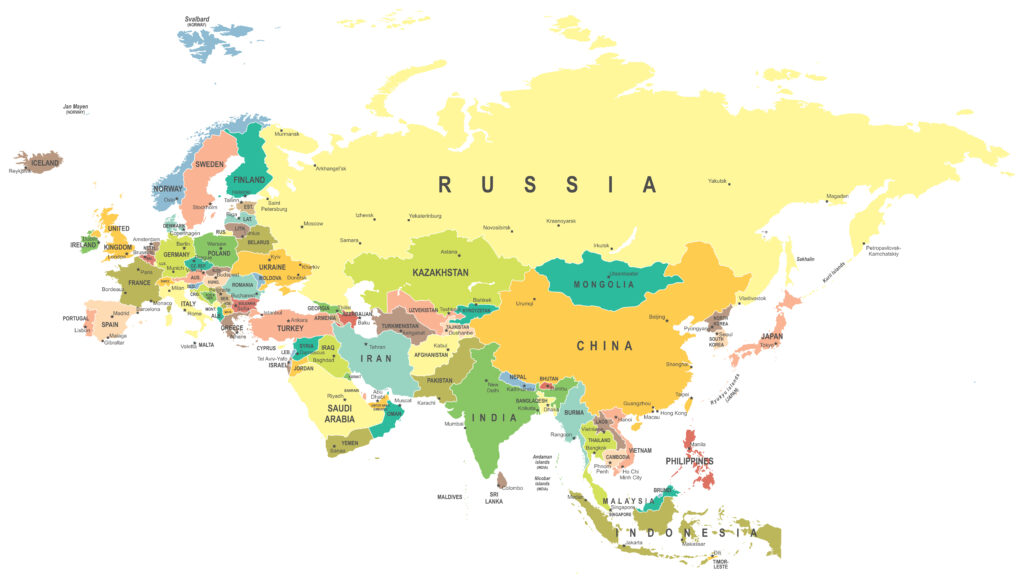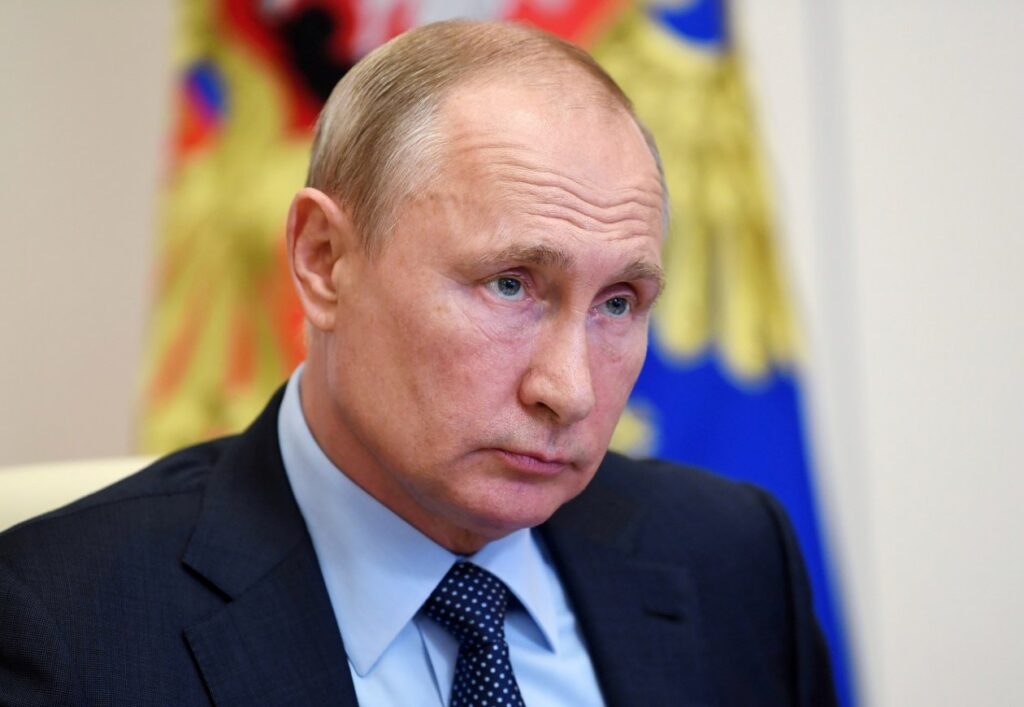
By Natylie Baldwin, OpEd News, 11/16/21
On October 18th, Russia announced it would formally suspend its mission with the NATO alliance, including ending official communication. This is a significant event but not totally shocking to anyone who has been paying attention to post-Soviet Russian relations with NATO. It’s important to look at what led up to Russia deciding it had enough and that it was no longer worth having an official relationship with the western military alliance as there is a lengthy historical context to the breakdown.
NATO had just expelled eight Russian diplomats for espionage activities but provided no public evidence or details on these serious allegations. But this was just the immediate event that provided the proverbial straw that broke the camel’s back.
Post-Cold War Triumphalism
The problem started with the triumphalist attitude that eventually prevailed in Washington after the end of the Cold War. President Ronald Reagan intentionally took the approach during negotiations with Soviet leader Mikhail Gorbachev that ended the Cold War that doing so would be in the interests of both countries. It was characterized at the time as a negotiated settlement that benefited all parties involved and not a defeat. Reagan’s successor George H.W. Bush adopted the same attitude until it was time to campaign for his reelection, during which he bragged that the U.S. had won the Cold War.
In the 1990’s, the Clinton administration, encouraged by foreign policy hawks, greedy defense contractors and domestic reelection politics, expanded NATO to former Warsaw Pact countries Poland, Hungary and the Czech Republic. This was a violation of verbal assurances given by U.S. Secretary of State James Baker, along with other western government officials, during 1991 negotiations with Gorbachev that NATO would not expand “one inch eastward.” This assurance was made in order to get Gorbachev to accept a unified Germany in NATO given the deep historical memory of the Germans having invaded Russia twice in the 20th century, the second time resulting in 27 million deaths and destruction of a third of the Soviet Union. But NATO didn’t stop there and expanded by seven more countries, right up to Russia’s border, by 2004.
It’s also worth mentioning that the NATO-Russia relationship as it was formulated in 2002 in the form of the NATO-Russia Council was never intended to be a vehicle that would allow Russia to be treated as a respected peer. Instead it was largely a pretense as admitted by those who came up with the idea, which included then British Prime Minister Tony Blair. As one of Blair’s aides later stated, “even if they [Russia] weren’t really a superpower anymore, you had to pretend they were.” Russia had a permanent ambassador to NATO and could theoretically participate in NATO discussions, but Moscow complained for years that they were often excluded from informal discussions prior to official meetings and would consequently face a coordinated bloc.
That same year, under George W. Bush, the U.S. unilaterally withdrew from the Antiballistic Missile Treaty – a move Russia viewed as a threat to strategic nuclear stability and a desire by the U.S. to pursue a first strike advantage. Likewise, the U.S. unilaterally withdrew from the Intermediate Range Nuclear Forces (INF) Treaty in 2018, a decision made by president Donald Trump whom we were supposed to believe was a Russian puppet. Problems with the INF Treaty had, however, been building for some time and it wasn’t just accusations of Moscow violating the treaty with a certain type of cruise missile. Starting in 2009, the Obama administration approved the installation of a missile defense system in Romania and then Poland that was a violation of the INF Treaty and was a serious concern to Russia.
In 2014, Washington played a key role in the Ukraine coup when then-Assistant Secretary of State for European and Eurasian Affairs Victoria Nuland was caught on a phone call with the U.S. ambassador to Ukraine discussing how to facilitate the removal of the corrupt but democratically elected government of Viktor Yanukovich and install their favored candidate as Prime Minister, Arseniy Yatsenyuk. It’s very interesting that their desired turn of events actually came to pass. This was clearly either a provocation or represented profound ignorance of the region by the U.S. State Department. The latter is a very generous interpretation given the fact that Nuland – a Neoconservative ideologue – was taking the lead on Ukraine.
Washington and NATO Double Down
In the aftermath of Russia’s severing of ties, the U.S. and NATO have doubled down on provocative activities rather than used the rupture as an opportunity for self-examination or an attempt to come up with fresh ideas to slow the spiraling relationship between major nuclear powers. Within the same week, U.S. Defense Secretary Lloyd Austin told audiences on his whirlwind trip to Georgia, Ukraine and Romania that the Black Sea was a U.S./NATO military interest. The U.S. subsequently sent two warships into the Black Sea early this month and members of Congress are now urging the Biden administration to ramp up military support to the area. Austin also stated that Russia should have nothing to say about whether Ukraine joins NATO or not. Within days of Austin’s trip, a conference of NATO defense ministers in Brussels revealed a new “master plan to contain Russia.”
As I have argued before, it would not be in Russia’s interests to attack the Baltic countries and it would not pass any remotely rational cost-benefit analysis. Moreover, military action by Russia in the post-Soviet era has been reactive in nature rather than aggressive. Its action in Georgia in 2008 was a response to a military attack by Tbilisi on Russian troops in South Ossetia according to the 2009 EU Fact Finding Mission report, and the annexation of Crimea was a unique situation that resulted from Moscow’s genuine perception of a serious national security threat. NATO officials even admit that they do not think any attack is planned by Moscow on its neighbors. As Reuters has reported: “Officials stress that they do not believe any Russian attack is imminent.”
But this didn’t stop the German defense minister from pouring fuel on the fire by stating in an interview around the same time that NATO should make clear that it is willing to use military force, including nuclear weapons, to deter Russia from attacking not just members of the alliance but partners. Needless to say, this was viewed as very disturbing by Moscow.
It would appear that from Russia’s perspective there has been little to no benefit from the arrangement it had been working under with NATO for the past two decades. The U.S., which effectively controls NATO, still seems to be suffering from its bout of post- Cold War triumphalism and continues to think that it can treat Russia as a bugaboo to justify bloated military budgets and as a whipping boy diversion from its domestic political problems. At the same time, U.S./NATO not only expects Russia to act as though it has no national security interests of its own to protect but is also obligated to provide diplomatic cooperation with the west when convenient, such as with Afghanistan and negotiations on the Iran nuclear deal. It’s no surprise that Russia finally felt it was time to put its foot down.

